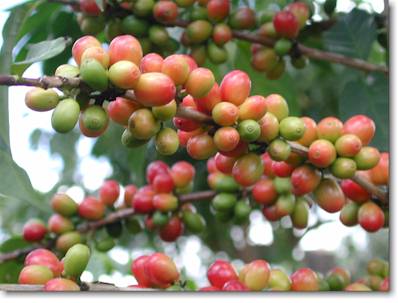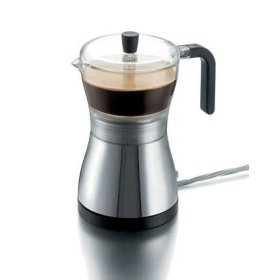Tasting: Green Mountain’s Special Reserve Colombian Dos Quebradas
The campaign helped to create a market for single-origin coffee… still it failed to deliver on its promise. Today, Colombian coffee growers have some ground to cover—the very gap that their Federation created between our expectations of Colombian coffee, and our experience. And so, even while the latest incarnation of Juan Valdez smiles his mustachioed smile at us—Colombian coffee farmers are racing to discover the true flavors and identity of their beans, their growing regions and micro-climates. In Colombia, as elsewhere, the Cup of Excellence competition is proving a particularly effective vehicle for discovery.
When you cup the field of winners of the Colombian First Harvest Cup of Excellence and your gut reaction is—okay… so what else ya got?—you just might be a coffee snob.
Colombian coffees—even specialty-grade coffees—are rarely knock-your-socks-off kind of beans. The character of Colombian coffee is often described as “classic”... medium bodied, gently acidic, and mildly fruited. For a coffee snob, those descriptors can spell a code word that doesn’t require Dan Brown to cypher out: m-e-d-i-o-c-r-i-t-y. And to be perfectly candid, there were cups in this year’s field of jury-selected winners that struck me as altogether… mild. Soft flavors, acidity that offered monotoned, mostly-lemon brightness in a cup that, at this level, should offer technicolor.
Make no mistake, this year’s Colombian C.O.E. program offered some exceptional beans, with flavor profiles that ranged far and wide—beans you might mistake for a huge and winey Kenya, or a dusky chocolate Nicaraguan—and with an intensity of flavor and nuanced complexity that such a competition demands. The most remarkable cup of all, however—the cup I bid on at auction, and which Green Mountain now offers as its third Special Reserve selection—is one we very nearly disqualified.
A single bad bean—one that is under-ripe or overripe, one that’s been fermented too long or otherwise mishandled in processing—can ruin an entire pot of coffee. In cupping the Colombian C.O.E. we had five cups of each lot of coffee on the table… and one of the five samples cups for this lot had a flaw. A serious flaw. You could smell it. You could taste it. It was unmistakable, and perhaps unforgivable in competition… except that the four other cups from that particular farm were arguably the most exciting of all the coffees on the table.
In the end—after another round of cupping that proved entirely without flaws—it was learning more about the farmer of this coffee that won us over. Don Alonso Sevilla Zúñiga has grown coffee for more than 60 years. He treats his coffee with respect and patience, and manages his land carefully. So was it something of a risk to put this particular coffee—a coffee that may prove to be a little edgy —on our Special Reserve list? Absolutely. But the rewards immediately reveal themselves in the cup.
Green Mountain’s Special Reserve Colombian—named after Don Alonso’s farm in Pitalito, Dos Quebradas—is an exceptional, and exceptionally balanced coffee. It’s a lovely chestnut-hued bean, roasted just on the full side of City. Just ground it’s intensely fragrant of coffee flower, orange blossoms and sweet cedar, and while it brews it offers grace notes of caramel and green apple. Its body is round, its acidity is crisp and snappy—assured but not overpowering—while its flavors are a rich and complex compote of summer fruits; melon and pear while the cup is very warm, peach and apricot as it cools. Its finish is just as dynamic, as its lingering acidity fairly dances on the tongue.
Kudos to the coffee team at Green Mountain—Lindsey, Patty, Deb, Shannon and Ed—for taking a chance on this remarkable bean… and for sparking my own renewed respect and appreciation for “classic” Colombian coffee.
Source: Coffee & Commentary




 Origin:
Origin:


